
All categories
Featured selections
Trade Assurance
Buyer Central
Help Center
Get the app
Become a supplier

(831 products available)





















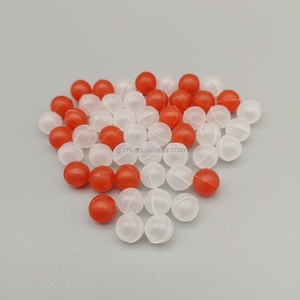


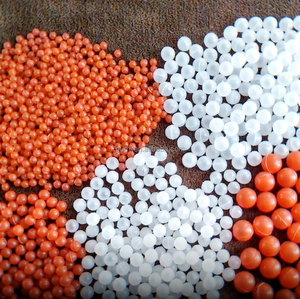
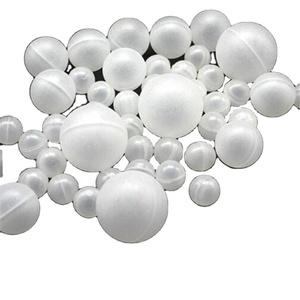







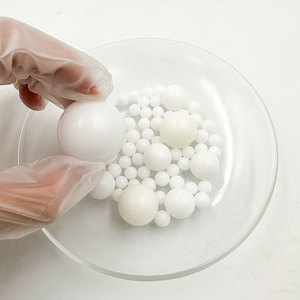

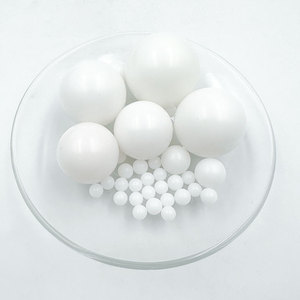

6mm ball floats come in several types, each designed to suit specific applications and preferences. Below are the most common types.
Traditional rubber ball floats are considered the oldest and most traditional option. Also known as a cork stock, this version of the ball float is crafted from natural or synthetic rubber and offers excellent buoyancy. The flexibility of rubber allows for a comfortable yet effective sealing mechanism. These types are preferred for delicate liquids where metal might cause contamination. They are durable and offer great resistance to chemicals and acids.
This type of ball float features a slightly raised centre crown. It provides a better sealing action compared to standard spherical designs. As the float rises, the crowned tip presses against valve seats to block fluid flow. The improved contact enhances closure rates for precise liquid control in tanks. The 6mm diameter makes it suited for smaller valves in low flow systems.
Manufactured from high-quality stainless steel, these floats are ideal for high-pressure environments. They are incredibly durable and resist corrosion, making them suitable for use in harsh chemicals or marine environments. Because of the material's non-magnetic properties, it is often used in applications where magnetic interference must be avoided. They come in varied grades like 304 and 316, catering to different levels of exposure to elements.
Plastic ball floats, often made from PVC or polypropylene, offer a lightweight and cost-effective alternative to metal or rubber floats. These types are highly resistant to corrosion and chemical damage, making them ideal for use in industries such as wastewater treatment and chemical manufacturing. They are also less likely to conduct heat, which can be useful in certain applications.
The main distinction of slotted ball floats from traditional varieties is one or more vertical slots carved into their surface. These longitudinal grooves allow fluid passage even when the ball is in its closed position. With the same 6mm size as other ball floats, slotted designs fit specialized applications requiring both float and flow functions. Examples include boilers and heat exchangers where controlled fluid circulation is essential.
Understanding the specifications and maintenance requirements for 6mm ball floats is crucial for wholesalers and retailers to ensure they stock reliable and durable products. Below are some key factors to consider.
The main specifications of the 6mm ball floats are made with materials for diverse operating conditions. Each material has its pros depending on the application.
These floats are a crucial component in several applications as they help control the level and flow of liquids in varied systems. Below are the most common uses of a 6mm ball float.
A 6mm ball float plays an important role in mechanical seal systems. It helps maintain the balance of pressure between the sealing faces. This reduces friction and wear during operation. This will enhance the float functional accuracy and make it a reliable option for fluid handling.
In industrial boilers, a 6mm ball float helps manage water level. It ensures proper steam generation by effectively connecting feedwater valves. It will help prevent dry operation or flooding and optimize energy efficiency in boiler systems.
6mm ball floats are widely used in tanks and vessels for liquid level control. They help open and close valves to maintain desired levels. Offering precise automation of fluid management in manufacturing, chemical processing, and water treatment plants. These floats provide reliable over time control in diverse environments.
6mm ball floats are used in fluid transfer systems where they help in simple, precise flow regulation. They connect feed and bleed lines to maintain stable process volume transfers without manual intervention. When empowered with the right materials, these floats resist chemicals and work reliably in harsh conditions.
In cisterns, the 6mm ball float will help regulate incoming water levels. This helps prevent overflow by closing the supply valve when the preset level is reached. It is widely used in agricultural water storage and plumbing systems for reliable automated water conservation.
These are used in aquaculture for oxygenation and water quality maintenance. 6mm ball floats help control aeration systems by regulating oxygen levels for aquatic life. It ensures optimal conditions for fish and plant growth. Using durable, corrosion-resistant materials empowers these floats to perform vital roles in sustainable aquaculture systems.
For hydrocarbon processing, 6mm ball floats manage valuable liquid levels in heat exchangers and separators. They help control streams effectively. This protects equipment from damage and maintains process integrity. When designed with compatible materials, these floats perform reliably in extreme temperatures and pressures.
In spray pumps, 6mm ball floats will maintain fluid levels for consistent operation. These are widely used in agricultural chemical application and industrial cleaning equipment. Spray pumps rely on these ball floats to automate refilling and prevent empty runs. Thus ensuring efficient, uninterrupted spraying processes.
In blend tanks, the 6mm ball floats will help manage the liquid levels necessary for mixing. These communicate in and out flows to maintain the preset level. This ensures optimal blend ratios are achieved and sustained in food, pharmaceuticals, and chemical manufacturing. These ball floats are vital for quality consistency and production reliability.
The two main factors affecting 6mmballfloat’s quality, as well as pricing, include materials and manufacturing processes, as well as market demand.
It is important to consider key factors like operating temperature, pressure, and the liquid's nature while selecting the 6mm ball float. One also needs to think about the material. For instance, stainless steel for high temperature and pressure environments and rubber for those requiring excellent sealing. If it is a corrosive environment, opt for plastic or 316-grade floats. Also, smooth versus crowned designs cater to varying sealing needs. Consider the operational requirements in the long run to ensure reliability and durability.
A 6mm ball float offers better control in low flow applications. It is ideal for small valves, ensuring precise liquid management without overshooting or oscillation. Its compact size makes it suitable for space-constrained environments. Despite being small, it still effectively handles varying liquid densities, making it versatile across many industries.
The metal ones can be maintained by regular cleaning to remove any build-up that could affect functionality and the flow of liquids. Also, for stainless steel ones, there should be lubrication to prevent corrosion and sticking. In addition, one should conduct inspections for wear and tear.
Signs like corrosion, pitting, or cracked rubber and warping or dented stainless steel indicate worn-out ball floats. Decreased buoyancy or difficulty in opening and closing valves due to wear usually leads to leaks and operational failures. Regardless of the state their users are in, slotted, crowned, or other types of floats should ideally be replaced every few years to maintain system integrity.
To wrap it up, 6mm ball floats are vital in many industries for liquid level control and valve automation. Their efficiency and durability make them highly sought after, especially in low-flow and small-valve applications. The choice of material, whether rubber, plastic, or metal, greatly influences the float's performance in various environments. Proper maintenance can enhance their lifespan and maintain system efficacy. As industrial needs evolve, innovation in float design will likely emerge, ensuring they remain relevant for future demands.